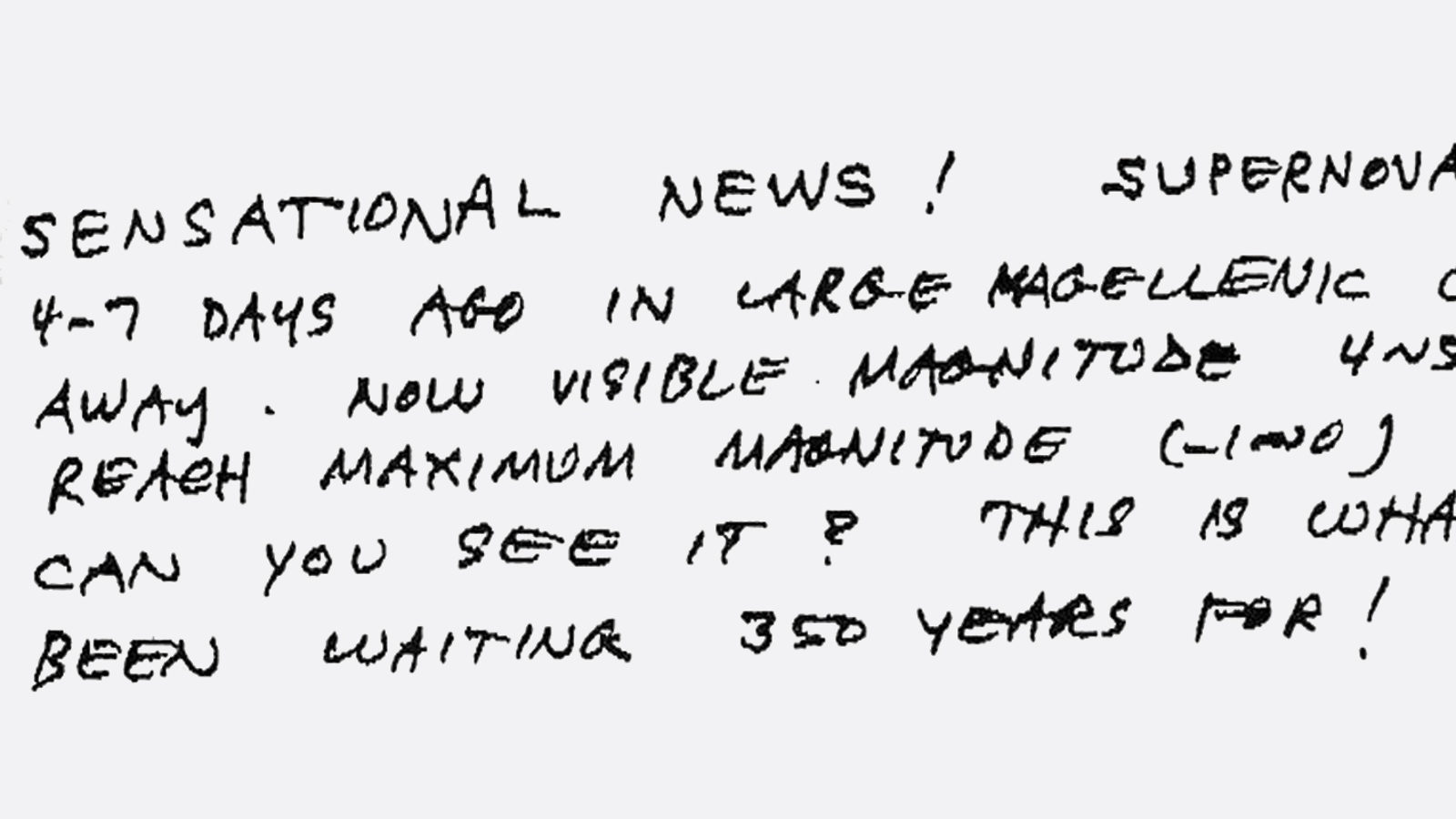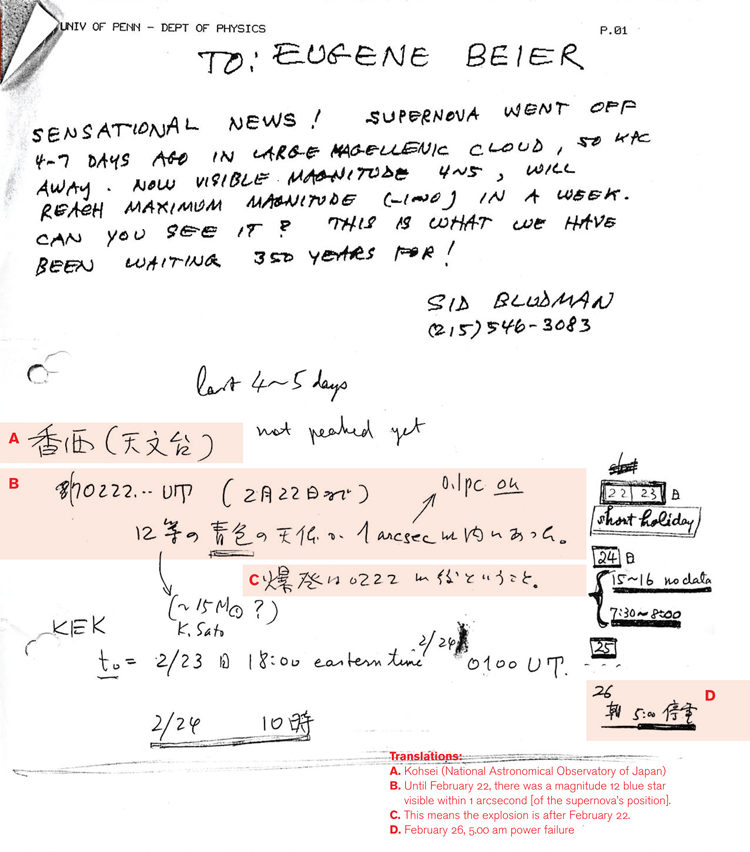The Kamiokande II neutrino experiment near Kamioka, Japan, was sensitive to a burst coming from a supernova. The notations on the fax were written by Totsuka as he learned the characteristics of the supernova precursor and the status of the Kamiokande II experiment and what data it had collected in previous days. Due to limits on how much data could be recorded on old-style magnetic tape, weekend running on February 22 and 23 fully captured only low-energy data. The timing of events was calibrated using a precisely recorded power failure that occurred on February 26.
When the data arrived in Tokyo, Masayuki Nakahata and Keiko Hirata made hundreds of pages of line printer output and found that Kamiokande II recorded signs of 11 neutrinos on February 23, about three hours before telescopes saw the first visible light emitted by this supernova, named Supernova 1987A. Koshiba shared half of the 2002 Nobel Prize in Physics with Raymond Davis, Jr. for their detection of cosmic neutrinos.








